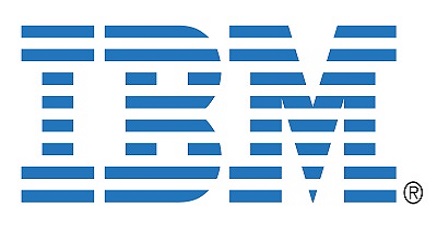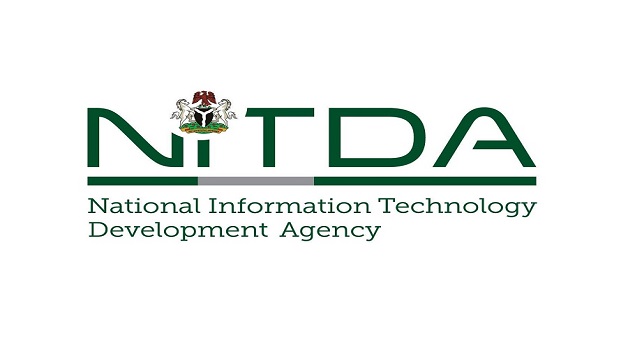E-Business
IBM Supports Mobile Economy with Z13 Mainframe Computer Launch

IBM, notable for its innovative capabilities, is combining a couple of odd computing with the new trends, following a new machine that combines the mainframe, the old workhorse, and the smartphone, launched on Wednesday.
Apparently, IBM designed the latest version of the mainframe with the smartphone in mind.
The new mainframe, the z13, has been engineered to cope with the huge volume of data and transactions generated by people using smartphones and tablets.
“This is a mainframe for the mobile digital economy,” said Tom Rosamilia, senior vice president in charge of IBM’s systems business, which includes mainframes. “It’s a computer for the bow wave of mobile transactions coming our way.”
IBM brings out a new mainframe about every three years, and the success of this one is critical to the company’s business.
Mainframes alone account for only about 3 percent of IBM’s sales.
But when mainframe-related software, services and storage are included, the business as a whole contributes 25 percent of IBM’s revenue and 35 percent of its operating profit, estimates A.M. Sacconaghi of Bernstein Research, as reported by Cyberoption.Net blog.
Over the years, IBM has done a good job of revamping the mainframe to handle new workloads.
Modern mainframes, for example, run a lot of open-source software, like the Linux operating system.
Today, though, IBM is in the midst of a transition challenge, it is investing to build large, growing businesses in new areas like cloud computing, big data analytics and mobile applications for corporations.
But those fields have not yet grown fast enough to make up for the erosion in some of its hardware, software and services offerings.
The mainframe is not a growth market for IBM.
But maintaining the mainframe franchise is a strategic imperative for IBM, giving it financial ballast and time as it pursues new opportunities.
“Ensuring the relevance of the mainframe, and with it deep ties into so many major corporate accounts, is crucial to IBM,” Sacconaghi said.
The new mainframe, Rosamilia said, has a host of technical improvements over its predecessor, including three times the memory, faster processing and greater data-handling capability.
IBM spent $1 billion to develop the z13, and that research generated 500 new patents, including some for encryption intended to improve the security of mobile computing.
Much of the new technology, Rosamilia added, is designed for real-time analysis in business. For example, he said, the mainframe system can allow automated fraud prevention while a purchase is being made on a smartphone.
Another example, he said, would be providing shoppers with personalized offers while they are in a store, by tracking their locations and tapping data on their preferences, mainly from their previous buying patterns at that retailer.
These real-time applications, according to Donna Dillenberger, a distinguished engineer at IBM’s Watson lab, can be done in a mainframe environment.
They are not yet possible on clusters of smaller, industry-standard computers, she said. But there are several open-source software projects, like Apache Spark, that focus on real-time data processing across large numbers of computers.
Mobile computing is certainly accelerating the data-handling and transaction-processing challenges for businesses of all kinds.
The volume of purchases made on smartphones and tablets in the United States, estimated at $114 billion last year, is projected to more than double to $293 billion by 2018, according to Forrester Research.
That kind of growth trajectory in America and elsewhere is largely attributable to the popularity and steadily improving capabilities of mobile devices.
But the simplicity of a tap-and-swipe mobile computer also contributes to the complexity of the computing tasks a user never sees when, for example, making an online purchase.
A single consumer action can set off four to 100 computing transactions — with information sent securely — like confirming an identity or authenticating a credit card.
Howard Rubin, an independent analyst, calls this the “starburst effect.” The advance of mobile computing, he noted, leads to “a surge of back-end transactions.”
In developing the z13, IBM worked with 60 companies and government agencies, mainly longtime mainframe customers.
But IBM won a convert in Ronald J. Peri, chief executive of Radixx International. Radixx, based in Orlando, Fla., runs the computerized reservation systems for 40 airlines, mostly smaller and midsize carriers outside the United States.
In the late 1980s, while working for an insurance company, Mr. Peri was an early advocate of moving off mainframes and onto networks of personal computers. An article from that time in The Wall Street Journal cited Mr. Peri as being in “the vanguard of a revolution” against the high-priced tyranny of mainframe computing.
Today Mr. Peri is shifting the back-end computing engine in the Radixx data center from a cluster of industry-standard servers to a new c.
After testing out the mainframe, he has been impressed by its performance, security and even cost. He estimates the total cost of ownership including hardware, software and labor will be 50 percent less with a mainframe than on his “sprawling server farm,” given the growing complexity of managing hardware and software from several suppliers.
“We kind of rediscovered the mainframe,” Mr. Peri said.
E-Business
Nigeria Strengthens Cybersecurity, Launches National Cleanup Plan

Nigerian government, through the Office of the National Security Adviser (ONSA) and the National Information Technology Development Agency (NITDA), has announced a strategic collaboration to strengthen cybersecurity and clean up the nation’s cyberspace.

Recognizing that cybercrime knows no borders, Nigeria also reaffirmed its commitment to fostering stronger global partnerships within the cybersecurity ecosystem.
This announcement was made during a press conference before the inaugural National Cybersecurity Conference, which is scheduled to take place in Abuja from July 9th to 11th, 2025.
Sa’ad Abubakar, national cybersecurity coordinator from the Office of National Security Advisor, said fighting cybercrime must take the whole of society and the whole of the government approach.
According to him, “Apart from the deterrent approach whereby government agencies such as Economic and Financial Crimes Commission (EFCC) arrest individuals, take them to court and prosecute them, the youth can be nurtured into better citizens who can showcase their capacity in better ways and be useful to the country.”
Similarly, Kashifu Abdullahi, director-general, NITDA, also stressed the need for collaborative efforts in fighting cybercrimes.
According to him “Then, in addition to that, we also want to build a stronger global collaboration with the global cyber security ecosystem, because when you look at cybercrime in general, it doesn’t respect the borders.
“Someone can commit a crime from Ghana using a Nigerian ID in the US. So you can look at him physically in a different jurisdiction, pretending to be in another jurisdiction, committing the crime in another jurisdiction.
“So without that kind of synergy and working together, it will be difficult to address these challenges. The third one is challenge. The third one is getting an alternative to cybercrime for our kids in Nigeria. We have this as a major challenge.”
Inuwa further highlighted the upcoming conference’s importance, noting that it would tackle key issues through workshops, discussions on emerging threats, cross-border cybersecurity collaboration strategies, and training programmes.
He also announced that the National Cybersecurity Conference 2025 would feature the Cybersecurity Excellence Awards, recognising top contributions in the field.
The DG extended an invitation to global partners to collaborate with Nigeria in building a safer digital future.
The press conference was attended by notable figures, including Ahmad Sa’ad Abubakar, National Coordinator of, the National Cybersecurity Coordination Centre (NCCC); Hanniel Jafar, Representative of the President, of Cyber Security Experts Association of Nigeria (CSEAN); Ankit Shukla, Managing Director, QNA Marketing Management LLC and members of the press and other stakeholders.
E-Business
AXIAN Telecom Invests in Jumia Post-MTN Era

XIAN Telecom has acquired an 8% stake in pan-African e-commerce company Jumia Technologies, citing the platform’s fintech and logistics strengths as key drivers of its backing.

This marks the first major telecom investment in Jumia since MTN Group’s exit in 2020.
AXIAN, a fast-growing telecom and digital services provider with operations across Africa, disclosed the purchase in a Schedule 13D filing with the U.S. Securities and Exchange Commission.
While the financial terms were not disclosed, AXIAN Telecom CEO, Hassan Jaber, described the move as a strategic alignment with Jumia’s growth trajectory and digital ecosystem.
“Jumia’s achievements in digital retail and fintech, particularly through JumiaPay and its logistics network, make it a very attractive investment for us. We believe in Jumia’s potential to promote financial and economic inclusion, which aligns with our core values,” said Jaber.
Once dubbed the “Amazon of Africa,” Jumia became the first African-founded tech company to list on the New York Stock Exchange in 2019.
But years of underperformance, leadership changes, and competitive pressures dented investor confidence.
In October 2020, South Africa’s MTN Group offloaded its 18.9% stake for $138 million, well below the $698 million value it once held post-IPO.
Since then, Jumia has undergone a significant transformation. Under CEO Francis Dufay, appointed in 2022, the company exited low-performing markets like South Africa and Tunisia, cut costs, and doubled down on core markets – Nigeria, Kenya, Egypt, and Morocco.
The firm is now focused on high-growth verticals, including everyday essentials and digital financial services.
Jumia’s regional CEO for East Africa, Vinod Goel, recently revealed plans to scale up international brand offerings and open its logistics network to third-party businesses.
Jaber underscored that AXIAN Telecom’s investment signals renewed confidence in Jumia’s long-term potential.
The telecom firm’s CEO said the company views Jumia as a key player in advancing Africa’s digital economy, aligning with AXIAN’s mission through its fintech and digital infrastructure brands such as Yas and Mixx by Yas.
E-Business
NIMC Plans to Register 95 Percent Nigerians by December

Abisoye Coker-Odusote, director general, National Identity management commission (NIMC) has said that the commission is set to register 95 percent of Nigerians into the National Identity Database before December 2025.

Abisoye Coker-Odusote,, DG, NIMC
She made this statement at a press briefing to highlight the commissions goal aligns with President Bola Tinubu’s Renewed Hope Agenda, particularly on digital governance and inclusive development.
The mass enrollment drive will be powered by a combination of improved infrastructure, expanded registration centres, and robust public sensitization campaigns.
As of May 2025, NIMC reports over 120 million Nigerians have been enrolled, and about 100 million more would be captured by December.

 E-Business2 days ago
E-Business2 days agoNIMC Plans to Register 95 Percent Nigerians by December

 News2 days ago
News2 days agoJAMB Waxes Worriedly over Rising Digital Exam Fraud

 Telecom2 days ago
Telecom2 days ago9mobile Nigeria Inks Agreement to Roam with MTN

 Telecom2 days ago
Telecom2 days agoIHS Nigeria Moves to Enhance G4S Secure Solutions Site Patrols and Increase Operational Efficiency with Patrol Vehicles

 Telecom2 days ago
Telecom2 days agoBanks, Telcos to Start Deducting USSD Charges from Airtime Today

 E-Business1 day ago
E-Business1 day agoAXIAN Telecom Invests in Jumia Post-MTN Era
- E-Financial1 day ago
UBA Compiles with NCC, to Deduct USSD from Customers’ Accounts

 E-Financial2 days ago
E-Financial2 days agoFitch Upgrades Fidelity Bank’s National Rating to ‘A+(nga)’, Affirms Long-Term IDR at ‘B’
















